We had our annual meeting of the L.M. Montgomery Land Trust last night out in Sea View, and on the way out I snapped this photo of French River from the lookout.
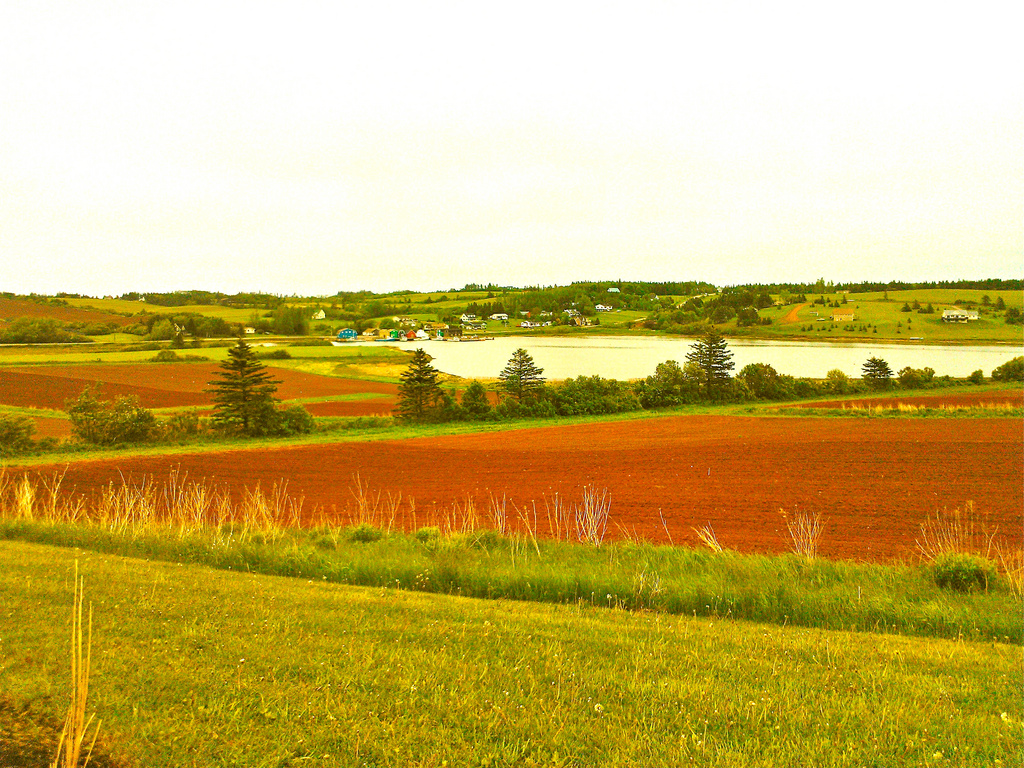
You never know where the tangents will take you. My cruise ship schedule experiments began when a newspaper ad led me to a not-helpful-enough web page and, in learning about cruise ships and how and where they move around, I learned a lot that I hadn’t planned on learning.
Like about the Automatic Identification System (AIS), for example, wherein ships of a certain size broadcast digital information about themselves, in the clear, over VHF frequencies. Using a decentralized network of AIS receivers, websites like Google Maps APRS, Vessel Finder, AIS Hub, MarineTraffic.com, VesselTracker.com that aggregate ship position information onto maps and other feeds. It’s an interesting example of data that needs to be free and open — it’s primarily intended as collision avoidance data — can be shared in unanticipated ways.
One of the important components of the AIS system is the MMSI — Maritime Mobile Service Identity — which is a 9-digit unique identifier assigned to each vessel. Not only is a ship’s MMSI broadcast as part of its AIS data, but it it’s also used to allow voice and data connections to vessels.
If you know a vessel’s MMSI, and you’re set up to monitor AIS broadcasts in your area, you can tell when a vessel comes into range.
I added the MMSI to the XML data file of cruise ships coming into Charlottetown this year — Maasdam, which arrives tomorrow, has an MMSI of 244958000, for example. If you Google that number you can find all manner of interesting information about the ship, from myriad photos (there is, apparently, an entire sub-hobby called “ship-spotting”) to its current position.
One can imagine — or at least I can imagine — an interesting hack that would monitor AIS data for Charlottetown and when a cruise ship was about to dock would sound some sort of klaxon to alert we citizens that the streets would soon be fully of horses pulling wagons, double decker buses, and rove bands of costumed fathers and mothers of Confederation.
I’ve become a tiny bit obsessed with this tiny website, and so have added a few new features:
- Is there a cruise ship in Charlottetown today? was the original page.
- 2012 Cruise Ship Calendar is a six-month calendar showing all ships in port.
- Look up any day with URLs like http://cruise.reinvented.net/on/2012-09-20
- Get JSON or XML output by appending /json or /xml, like:
- Embedded Schema.org microdata is in each date’s page.
- iCal Calendar can be loaded into iCal or other calendar applications.
- Google Calendar (embedded below).
I’ve also updated the raw XML of the cruise ship data with the MMSI for each ship.
Is there a cruise ship in Charlottetown today?
Data scraped out of here with this handy Chrome extension, cleaned up in Numbers and imported into a MySQL table around which a PHP app was wrapped. Here’s the data if you want to roll your own.
One of my favourite places to eat — indeed one of my favourite places on earth — is the back garden at Tai Chi Gardens here in Charlottetown. Every time I visit there’s something new to see, and this morning it was these men.
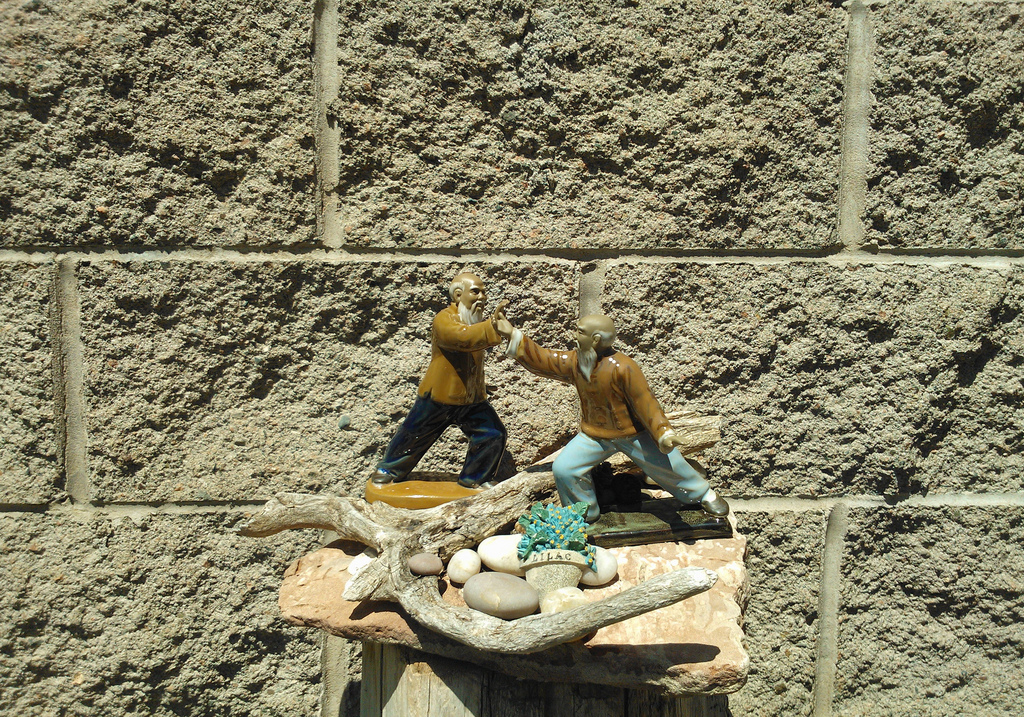
No matter your opinion on plans to re-route the Trans-Canada Highway out in Bonshaw, you have to admire these posters, which have gone up all over downtown Charlottetown over the past few days. Simple, bright, powerful, and on almost every electic pole south of Euston Street.
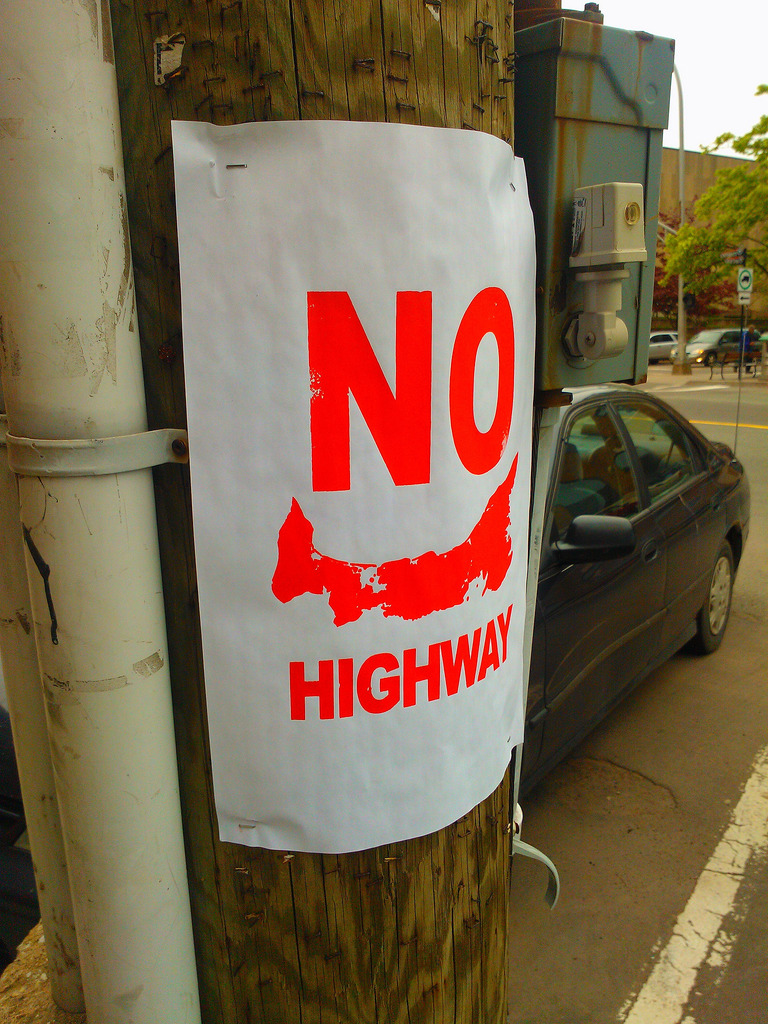
I didn’t plan for this, but I really like the way it worked out: “Casa Mia Café” is framed perfectly by the envelope when you open the flap. A taste of things to come, so to speak. The envelope, like the gift certificate paper, comes from Papeterie Saint-Armand.
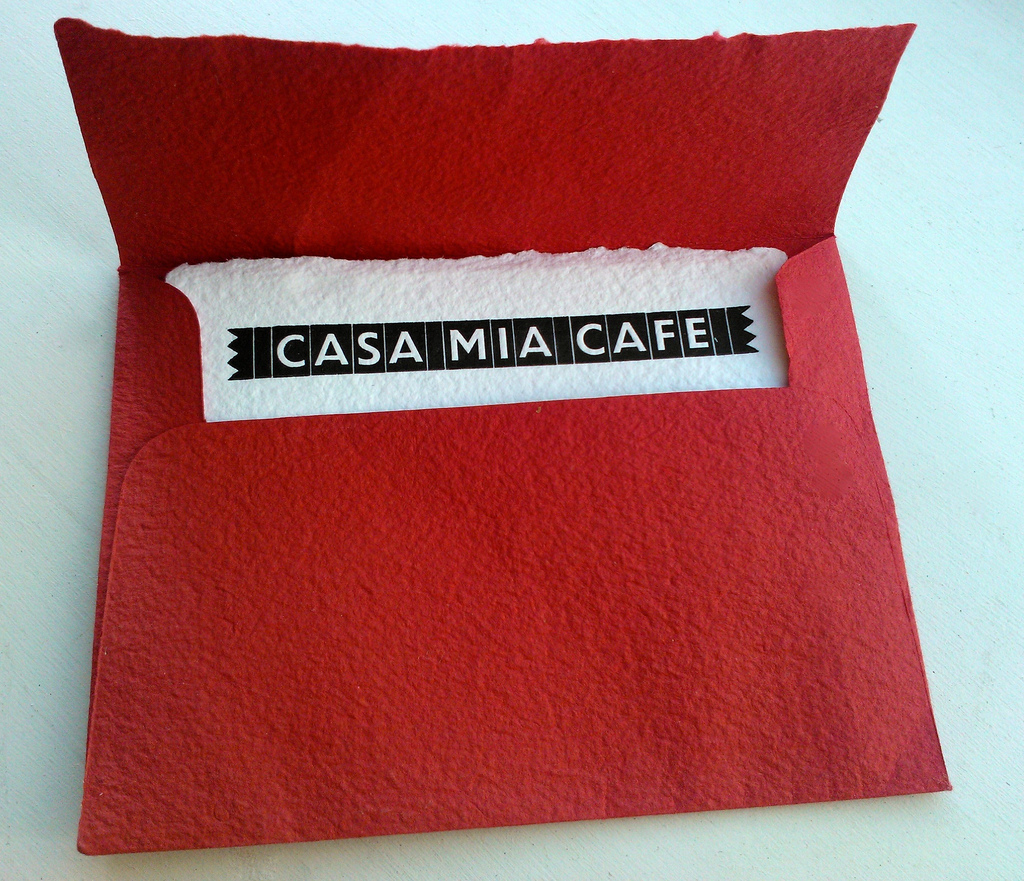
I have been putting the pieces together for a new Casa Mia Café gift certificate for a couple of months. Not quite finished yet, but the paper (from Papeterie Saint-Armand) is ready, and I’m experimenting with the type. Here’s where I’ve arrived so far:
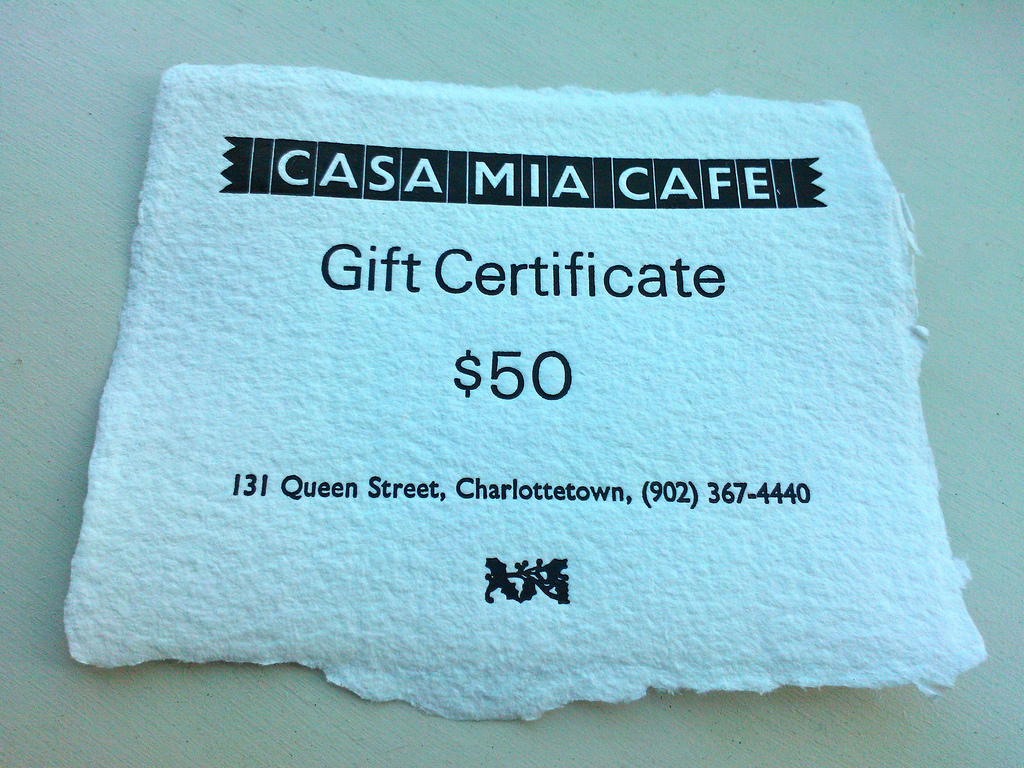
The “Casa Mia Cafe” is from a font of Stephenson Blake Reversed I bought from Atelier Domino a couple of weeks ago. The ornament at the bottom is one I picked up from the Museum of Printing sale last year north of Boston.
Earlier this spring, along with my colleagues from the PEI Home and School Federation and with the PEI Teachers Federation, I had the pleasure of meeting with Premier Robert Ghiz to express our concerns about cuts to the budget for education technology (the capital budget was cut from $500,000 to $0 for 2012-2013).
While clearly a supporter of the idea of technology in education, the clear message we received from the Premier was “there’s no money.”
He told us this backwards and forwards and as the plot to a variety of stories.
We came back at him in a number of ways, from the tactical to the emotional.
“There’s no money.”
With no money for capital spending on technology, he told us, the education system must innovate through thrift and creativity.
Given that I have built an entire career around the practise of thrift and creativity, this was a something of an irresistable challenge.
And, indeed, a useful tool that I knew we could use to accelerate innovation at a pace that would have otherwise been bureaucratically impossible: “The Premier says we have to innovate through thrift and creativity” is a pretty good calling card to use when trying to sell people out of the box.
The first project under this call to action went live a week ago: a home-and-school owned, funded and operated wireless Internet network for Prince Street Elementary School. We call it TeacherNet.
You can read the political, logistical and technical details here, but the short version of the story is this: wireless Internet in the classroom is coming, indeed in newly-constructed schools it’s already there. But with cuts to technology funding and an already-over-taxed technology division in government, it’s likely not coming to existing schools for several years.
Which is about a decade after it came to the local coffee shop.
As parents, we wanted to get wifi into Prince Street school sooner than that to allow our children’s educators to start experimenting with ways of using a wireless network in the classroom (keep in mind that these are educators who are used to using a slow, locked-down network on underpowered equipment, so in many ways “wireless Internet” for them means “Internet that actually works.”)
We were fortunate to have several important things happen to make this pilot project happen: the principal and staff at the school were early and enthusiastic supporters of the project; Bell Aliant came on board early with a 6-month donation of 20 Mbps Fibre Op to supply bandwidth to our network; we received an exception to the policy that would have otherwise prohibited third-parties from installing wireless into a government building; and Ken Williams, a home and school volunteer from Tyne Valley offered his services, and the loan of some gear, to get the technical side of the network up and running.
Here’s what the first week of traffic on the network looked like: 6 users transferred almost 1 GB of data. In the days and weeks to come, as additional educators start experimenting we expect usage to increase.

We’ve committed to our peers in the home and school movement, and to partners in the education system, that we’ll document the project, both technically and from a user perspective. You can follow along the process as we update the documentation.
This has been a fun project to be involved with. I’ve had a lot of interesting conversations, got a chance to poke around the nooks and crannies of Prince Street School with wire cutters in-hand, the opportunity to learn a lot about inexpensive Open-Mesh wireless routers, and, most importantly, got to use some of my day-to-day work skills to support educators at Oliver’s school.
I encourage others to heed the Premier’s call to action (I hope he meant it as a call to action…) and seize the opportunity to innovate in your own schools. If our experience is any guide, you will find willing co-conspirators in principals, teachers and staff, a bureacracy willing to adapt as long as you are patient and forthright, and no end of interesting projects waiting to be carried out.
One of the novel things to show up in Charlottetown restaurants in the last few years, courtesy of the sudden influx of places operated by Korean newcomers, is the table-side call button. Here’s what they look like at the newly-opened Mr. Sushi on University Avenue:
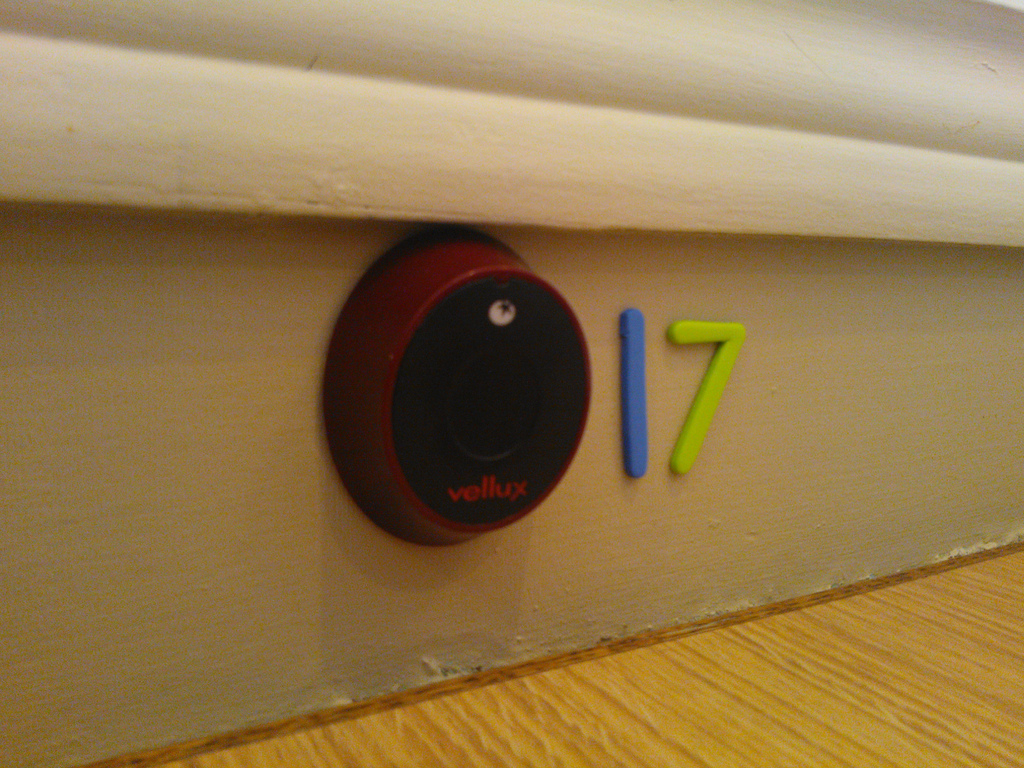
You’ll find similar call buttons in Ta-ke Sushi on Queen Street and in Sushi Jeju on Grafton Street.
By all appearances Islanders have absolutely no idea what to do with them: I’ve very seldom seen anyone use them, and I know from my own family’s reaction — “we don’t want to disturb them,” etc. — there’s some hesitation to.
Once you crack through the hesitation, though, they are a great innovation: no more need to wave your arms to attract your server — just press the button. Missing a menu? Or a fork. Want to order some dessert? Or need the check. Just press the button!
For someone like me, for whom vagueness about the social cues and customs is a source of some anxiety, it’s a great help. I encourage you to join in and start pressing.
(The Mr. Sushi button system comes from a company called Vellux Wireless Calling Solutions that makes call buttons for everything from casinos to retirement homes).
 I am
I am